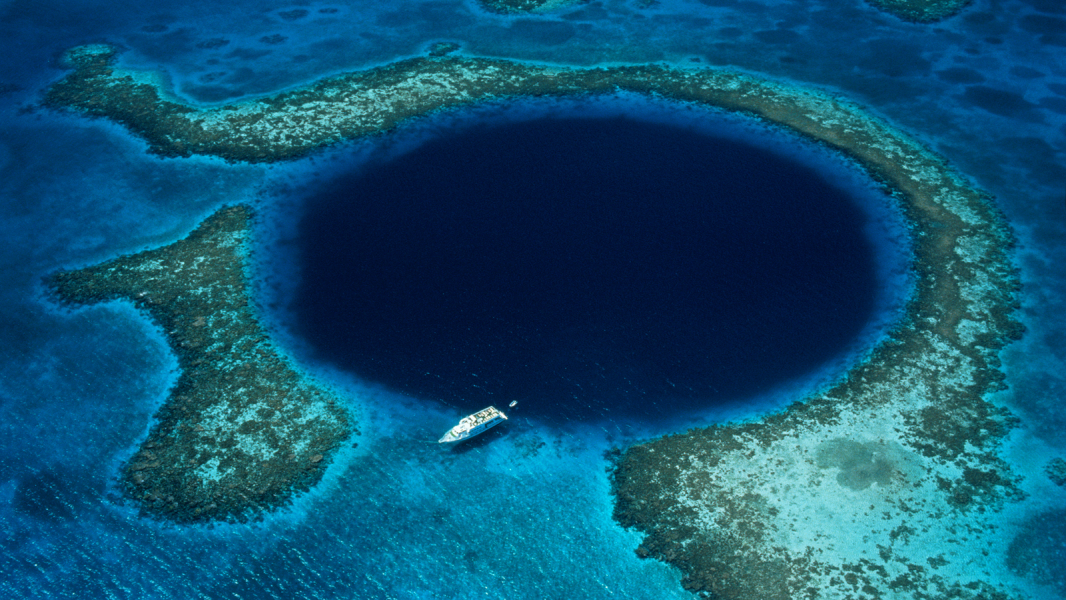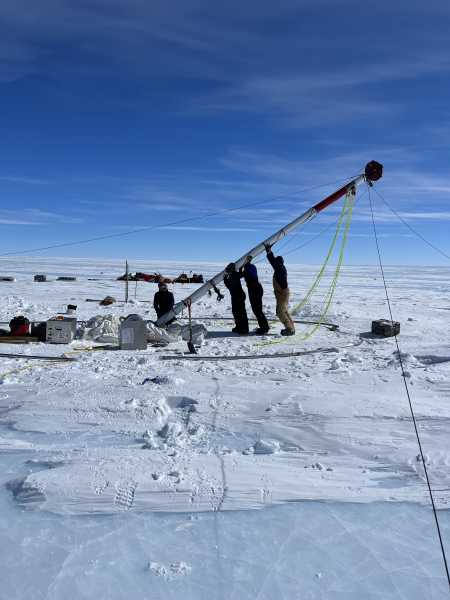
Researchers have removed a 98-foot core from the bottom of the Great Blue Hole off the coast of Belize to study tropical cyclone patterns over the past 5,700 years. (Image credit: Schafer & Hill/Getty Images)
Tropical cyclones in the Caribbean are becoming more frequent and could become significantly stronger in the coming decades, according to data found deep within the Great Blue Hole.
Scientists have extracted a sediment core from the Great Blue Hole, located about 50 miles (80 kilometers) off the coast of Belize. The study found that the frequency of tropical cyclones has increased over the past 5,700 years. The findings were published March 14 in the journal Geology.
“The main finding of our study is that the number of regional storms has been steadily increasing since 5700 BCE (until today),” lead author Dominik Schmitt, a researcher in the Biosedimentology Research Group at Goethe University Frankfurt, told Live Science. “It is worth noting that the frequency of storm landfalls in this region has been significantly higher in the last two decades compared to the previous six millennia — a clear indication of the impact of modern global warming.”
The Bottom of the Great Blue Hole
Tropical cyclones are powerful, rotating low-pressure systems that form over warm ocean waters. They transport heat from the ocean into the upper atmosphere. These storms can be extremely destructive, producing strong winds, heavy rain, and storms.
To better understand these long-term storms, the researchers extracted a sediment core from the bottom of the 410-foot-deep (125-meter) Great Blue Hole, a massive underwater sinkhole formed by rising sea levels during the last ice age about 10,000 years ago. The 98-foot-long (30-meter) sediment core is the longest continuous record of tropical storms in the region.
By analyzing the sediment layers in the core, scientists were able to determine the number of tropical cyclones that have occurred over the past 5,700 years. Typically, two layers of fair-weather sediment are deposited each year, allowing researchers to count the years like tree rings and compare when the layers of sediment were laid down by storms.
Scientists have found that tropical cyclones have become more frequent over the past 5,700 years, with their frequency increasing significantly since the burning of fossil fuels began during the Industrial Revolution.
“Over the past six millennia, the Great Blue Hole has seen between four and 16 tropical storms and hurricanes every century,” Schmitt said. But in the past 20 years alone, researchers have found evidence of nine tropical storms that have passed over the same region.
Sourse: www.livescience.com





